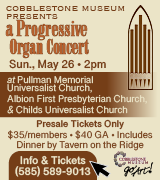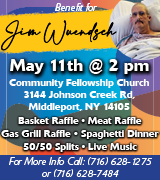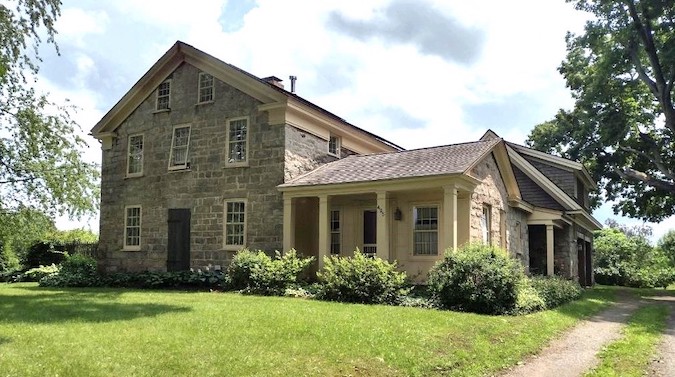Cobblestone tour of homes features 8 historic, intriguing sites in Holley, Brockport
HOLLEY – The Cobblestone Museum’s annual tour of homes will take on a new look this year as it expands its focus on examples of regional historic architecture in Orleans County, according to Museum director Doug Farley.
“Usually, the annual tour is exclusively cobblestone buildings,” said Erin Anheier, organizer of the tour with Chris Hunt. “This one is different as it only has one cobblestone house, but also has structures with other features, all linked by being masonry, with an emphasis on local stone.”
The tour continues an annual tradition that was put on hold during the pandemic, Farley said.
This year’s tour also focuses on architectural treasures in the eastern portion of Orleans County and western Monroe. The buildings are made of Medina sandstone, limestone, dolomite, lake washed cobbles and several brick buildings. In addition, there is a wide variety of buildings, as well as some that are seldom open to the public, Anheier said.
The self-drive tour is scheduled Aug. 26. Tickets are $20 for Cobblestone Society members and $25 for non-members. Tickets are available now by calling the museum or online at CobblestoneMuseum.org. They will also be available on the day of the tour at the Museum or at Hillside Cemetery Chapel, Route 237 and South Holley Road, Holley.
Buildings on the tour in Orleans County are Hillside Chapel, corner of Route 237 and South Holley Road; Holley Gardens, 1 Wright St., Holley; the old Holley Water Works, Pumping Station Road, Holley; and Butterfield cobblestone home, 4690 Bennetts Corners Road, Holley.
In Brockport, buildings on the tour are the White Farm bed and breakfast, 854 White Rd.; the King house, 495 White Rd.; the Locke house, 301 Beadle Rd.; and Lake View Cemetery chapel, 4988 Lake Rd.
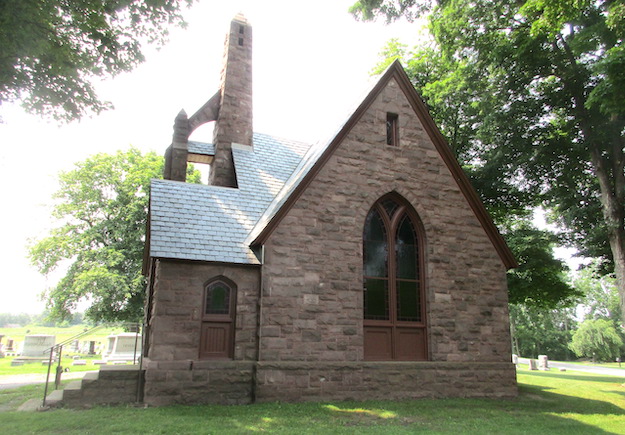
Hillside Cemetery chapel was built in Gothic Revival style in 1894 of rough-faced Medina sandstone. The steep roof is cross gabled and covered with slate. The chapel was recently restored through the cooperative efforts of the town of Clarendon and Clarendon Historical Society. It is listed on the National Register of Historic Places and the Medina Sandstone Hall of Fame.

Holley Gardens has been the site of a school since 1848. The brick building housed students until 1975. It sat vacant and fell into disrepair until 2018 when a developer undertook a $17 million project to turn it into a senior living complex with 41 apartments and offices for the village of Holley. The auditorium has been converted into public meeting space. It is also listed on the National Register of Historic Places.
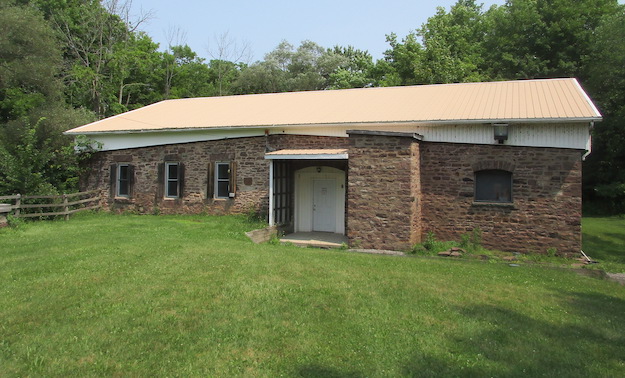
Holley Pumping Station is a Medina sandstone building at the north end of Pumping Station road. It was a cider mill built by a gentleman named Curtis in 1856. The village of Holley purchased it in 1890 from John Downs and doubled the existing building’s footprint to house the needed steam apparatus to power the water pumps.
At one time this pumping station provided enough water from its wells to provide water for both Brockport and Holley. This site, where West Sandy Creek flows down into a ravine creating a ready source of water power, has seen other mills in history, including a grist mill and saw mill.

The Butterfield Cobblestone is a Greek Revival home of lake washed cobblestone built in 1849 for Orson Butterfield. The form of the house is that of a standard 19th century farmhouse. Limestone forms the watertable and the quoins which mark the corners. Homeowners added a one-story addition with full basement in 2013. They made the addition’s interior and exterior trim, copying the original house. The home is owned by Erin Anheier and Russ Bosch. The porch has retained its original floor of stone slabs. This home is listed on the National Register of Historic Places.
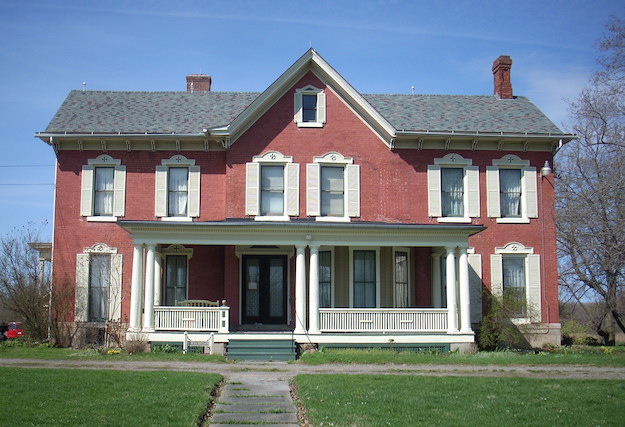
The White Farm bed and breakfast was built of brick in the early 19th century for John White, who settled there in 1821. Prosperity from the sale of wheat enabled him to significantly enlarge the home. Generations of the White family lived there until 1992. Of particular interest is an extensive decoration in the dining room with scenes of wildlife and folate designs within a stenciled border. It is the work of David Bruce of Brockport, whose taxidermy work is on display at the Farmers’ Hall at the Cobblestone Museum.
The artistry was discovered under layers of pale yellow paint when it was painstakingly removed by current owners, Christine Hunt and Scott Galliford. The property also has a c. 1830 and 1903 barns, a c. 1840 stone smokehouse, a c. 1890 combination milk and icehouse, a c. 1915 garage and a 1953 quonset hut. The house and outbuildings, with the exception of the Quonset hut, are listed on the National Register of Historic Places.
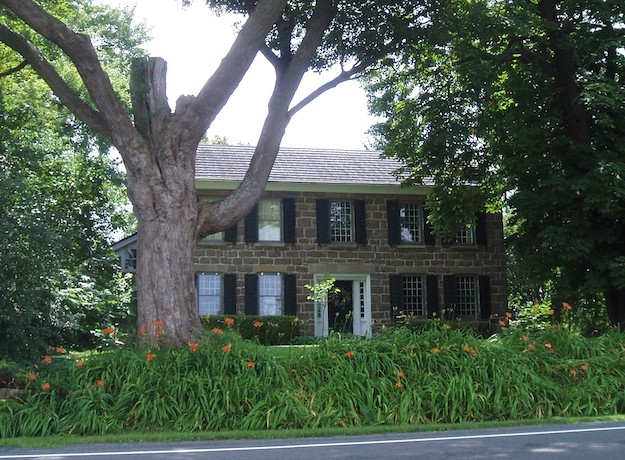
The Locke House will be available for exterior tour only. Built in 1828 by builder and owner Nathan Locke, it is a five over four bay Federal style quarried dolomite structure with a Greek Revival addition in the rear. The addition was moved sometime after 1858 from further down the road and attached to the stone structure to house a then modern kitchen. All but one of the original outbuildings remain.
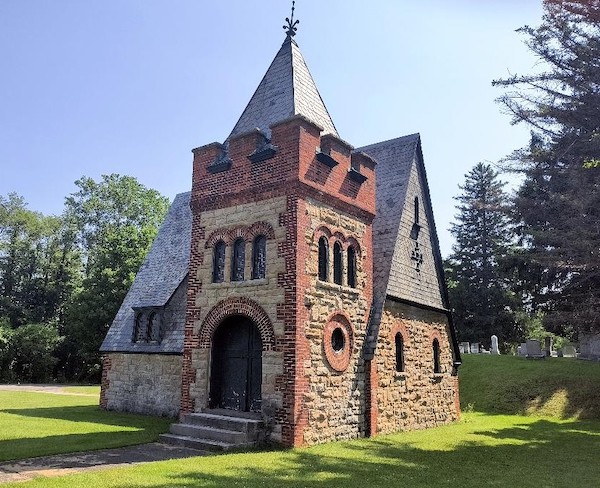
Lake View Cemetery Chapel is an 1892 Norman Revival chapel of local gray rock, likely Lockport limestone which was quarried in the town of Sweden. The rough faced sandstone is accented with brick surrounds for the round arched doors and windows. The building features a square tower with a crenellated top and a steep slate roof with wide bands of scalloped slates. The stained glass windows are geometric in design with circular patterns and jewel-like buttons. The fountain south of the chapel was non-operational for many years and used as a planter, but was restored by the town to its original function. Both the chapel and fountain are listed on the National Register of Historic Places as contributing structures within the cemetery.
The King House (in very top photo) is owned by Archie and Pat Kutz. The original part of the house is the front gabled, three bay section built in 1829 for farmer William King, making it one of the oldest structures in the town of Sweden. The walls are local limestone. Several additions have been made over the decades. Current owners have added the sunporch and rear garage section, with attention to blending the masonry so as not to detract from the earlier construction.
More detailed information on each structure will be available in a brochure provided to ticket purchasers.
















